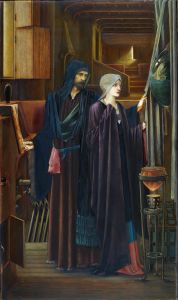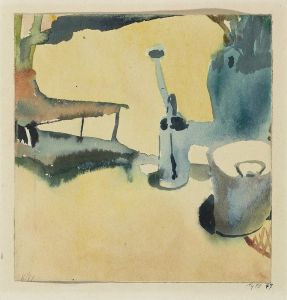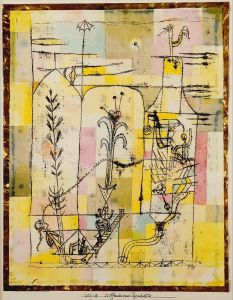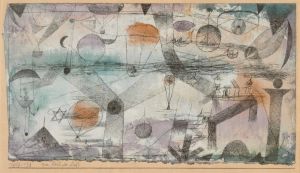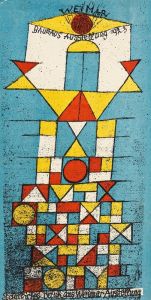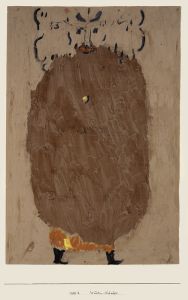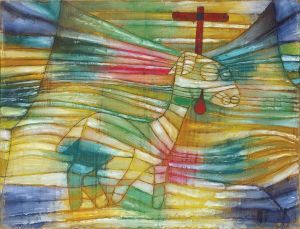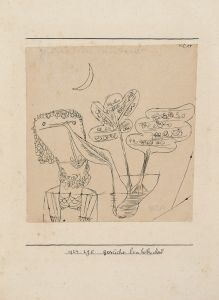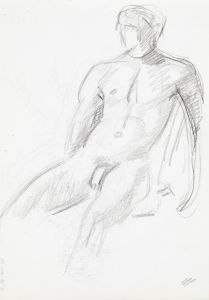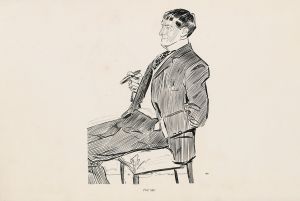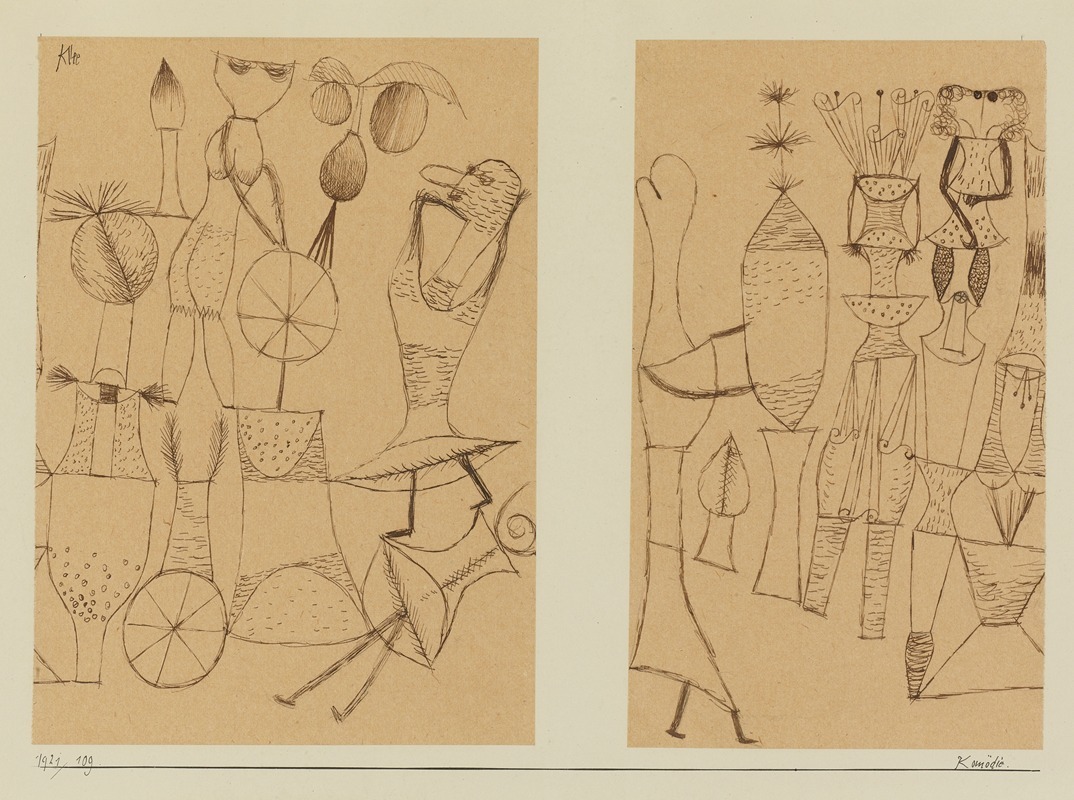
Komödie
A hand-painted replica of Paul Klee’s masterpiece Komödie, meticulously crafted by professional artists to capture the true essence of the original. Each piece is created with museum-quality canvas and rare mineral pigments, carefully painted by experienced artists with delicate brushstrokes and rich, layered colors to perfectly recreate the texture of the original artwork. Unlike machine-printed reproductions, this hand-painted version brings the painting to life, infused with the artist’s emotions and skill in every stroke. Whether for personal collection or home decoration, it instantly elevates the artistic atmosphere of any space.
Paul Klee's painting Komödie (translated as "Comedy") is a work created by the Swiss-born German artist, who is widely regarded as one of the most influential figures in modern art. Klee, known for his highly individual style, was associated with various movements, including Expressionism, Cubism, and Surrealism. His works often feature a blend of abstraction and figuration, with a focus on color, line, and symbolism.
Komödie was painted in 1921, during Klee's tenure as a teacher at the Bauhaus, the renowned German art school that emphasized the integration of fine arts, crafts, and design. This period marked a significant phase in Klee's career, as he developed a systematic approach to art-making, exploring the interplay between form, color, and structure. The painting reflects Klee's interest in theatrical and narrative themes, as well as his fascination with the human condition, which he often expressed through whimsical and enigmatic imagery.
The composition of Komödie features a series of abstract forms and symbols arranged in a grid-like structure, a characteristic technique in Klee's work. The title suggests a connection to the theme of comedy or performance, though the exact narrative or meaning remains open to interpretation. Klee often drew inspiration from music, literature, and theater, and his works frequently evoke a sense of playfulness and improvisation.
The painting is executed in Klee's signature style, which combines delicate lines, vibrant colors, and a sense of rhythm. His use of color in Komödie demonstrates his deep understanding of color theory, a subject he taught at the Bauhaus. The interplay of warm and cool tones, along with the layering of translucent hues, creates a dynamic and harmonious composition.
Komödie is housed in the collection of the Kunstsammlung Nordrhein-Westfalen in Düsseldorf, Germany. The museum holds an extensive collection of Klee's works, reflecting his importance in the history of modern art. The painting is considered an example of Klee's ability to merge intellectual rigor with a sense of humor and poetic expression.
As with many of Klee's works, Komödie resists definitive interpretation, inviting viewers to engage with its visual language and explore their own associations. It exemplifies Klee's belief that art should not merely replicate reality but rather reveal deeper truths and emotions through abstraction and imagination.





